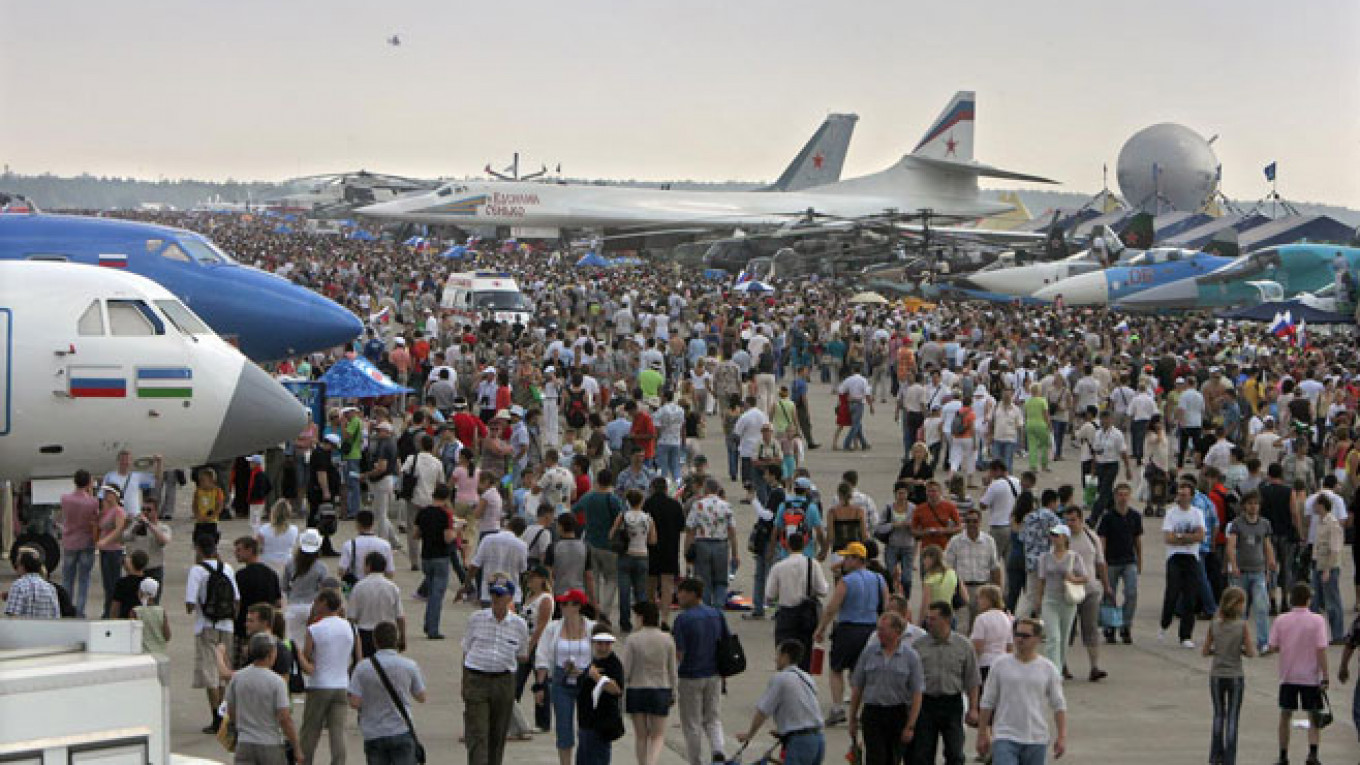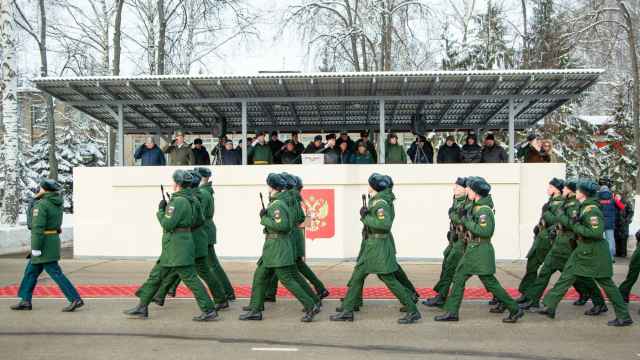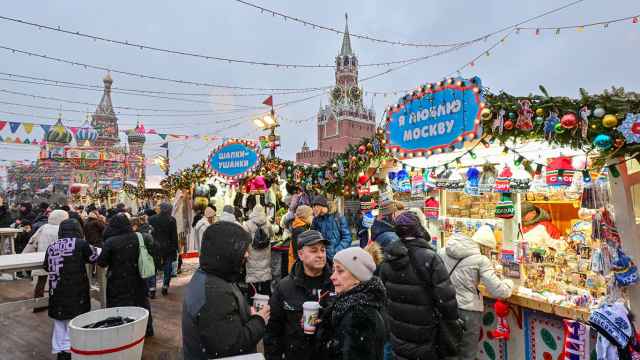A new airport backed by powerful state corporation Rostec is set to emerge near Moscow to relieve existing giants like Sheremetyevo and Domodedovo.
The Ramenskoye Airport, located 25 kilometers southeast of the Moscow Ring Road in Zhukovsky, will serve commercial airlines as well as flight tests by the Russian Air Force of its latest jets, using the same runways, if things go according to plan. Ramenskoye is also home to the biannual Moscow Air Show.
The owner of the airfield, Rostec, has selected a Lithuanian firm to help convert some of the property into a civilian airport in a deal worth $240 million.
“The existing three international airports in Moscow are rapidly approaching the limits of their capacity,” said Tomas Vaisvila, head of management and development of aviation infrastructure at Avia Solutions Group, the Lithuanian partner.
In 2020, traffic through Moscow airports will be 10 million people more than the current ones can handle, Vaisvila predicted in a recent interview by e-mail. By that time, Ramenskoye will expand enough to pick up the slack, he said.
Its projected capacity at the end of all planned expansions, 12 million passengers per year, will put it ahead of the airports of Cote d’Azur in Nice, France; Chopin in Warsaw, Poland; and Gran Canaria, Spain, Vaisvila said.
The airfield boasts Europe’s longest landing strip, which stretches for 5.4 kilometers, allowing it to service any type of aircraft. But the plan is to tailor Ramenskoye for low-cost carriers, Vaisvila said.
Vaisvila said his company was hoping that Aeroflot’s Dobrolyot low-cost subsidiary would choose Ramenskoye as its base. Aeroflot’s deputy director for finance and investment said last year the company was looking closely at the project, Itar-Tass reported. Rostec is a minority shareholder of Aeroflot.
A spokesman for Dobrolyot, which is expected to start flights later this year, said he had no comment Friday.
Russia’s low-cost airline services are only nascent. Foreign low-coster easyJet began flying out of Domodedovo in 2013, and Ryanair plans to begin flights to Russia this year.
Avia Solutions expects to sign a formal joint venture agreement with Rostec, whose assets range from a telecoms provider to the country’s largest carmaker AvtoVAZ, in the next few months, Vaisvila said. Construction could start this summer, and operations next year.
Oleg Panteleyev, an airline industry expert, warned that the project had to clear some steep hurdles to go forward.
First of all, it would take considerable effort to win permission for civilian airlines to take off and land at a militarily sensitive airfield, he said.
“It is baffling how they would combine regular commercial flights with tests of top-secret jets,” he said.
Also, the air traffic patterns in and out of Domodedovo Airport, which sits close to Ramenskoye, would have to change to take into account the rival hub, Panteleyev said.
“One cannot describe this project as cloudless,” he said.
But Panteleyev said there was definitely room for another airport, considering the growing number of air passengers passing through Moscow. The existing airports, including Vnukovo, will not be able to expand infinitely, restricted mostly by the capacity of access roads and railways, he said.
The three airports handled 64 million passengers last year.
The Kaluga regional government and Russia’s third-largest airline UTair are promoting a similar project for another airport to serve Moscow. With estimated construction costs at 11.3 billion rubles ($320 million), the Yermolino Airport — used by the military until late 2012 — could start taking flights in 2017 and cope with 7.5 million passengers a year by 2021.
The partners for Yermolino have also touted the would-be airport as a base for budget airlines. Its location in Kaluga is further away from Moscow than Ramenskoye. A potential high-speed rail link would bring passengers from Moscow to Ramenskoye in 40 minutes, compared to 90 minutes to Yermolino.
But the dynamics of the airline traffic could change for the worse, should the economy dip into a recession — a prospect that does not look impossible with the recent economic slowdown and the threats of Western sanctions over Russia’s meddling in Ukraine’s affairs.
In December Avia Solutions won a tender organized by Rostec. The Lithuanian company is developing terminals at Vilnius International Airport in its home country and Aktau International Airport in Kazakhstan. It built an aircraft maintenance center in Kaunas, Lithuania, and is in a similar project in Ulyanovsk, Russia.
Avia Solutions will secure its stake in the joint venture with Rostec by investing $30 million and will seek to attract financial partners by issuing additional stock or bonds. Rostec will contribute the land and real estate it owns at the airport.
Under the plan, Ramenskoye will include a cargo terminal. The project also calls for a shopping mall, a 250-room hotel, office centers, multi-story parking lots and various other commercial facilities.
“This will be an airport city like Helsinki Airport, rather than just an airfield and a terminal,” Vaisvila said.
Contact the author at [email protected]
A Message from The Moscow Times:
Dear readers,
We are facing unprecedented challenges. Russia's Prosecutor General's Office has designated The Moscow Times as an "undesirable" organization, criminalizing our work and putting our staff at risk of prosecution. This follows our earlier unjust labeling as a "foreign agent."
These actions are direct attempts to silence independent journalism in Russia. The authorities claim our work "discredits the decisions of the Russian leadership." We see things differently: we strive to provide accurate, unbiased reporting on Russia.
We, the journalists of The Moscow Times, refuse to be silenced. But to continue our work, we need your help.
Your support, no matter how small, makes a world of difference. If you can, please support us monthly starting from just $2. It's quick to set up, and every contribution makes a significant impact.
By supporting The Moscow Times, you're defending open, independent journalism in the face of repression. Thank you for standing with us.
Remind me later.






